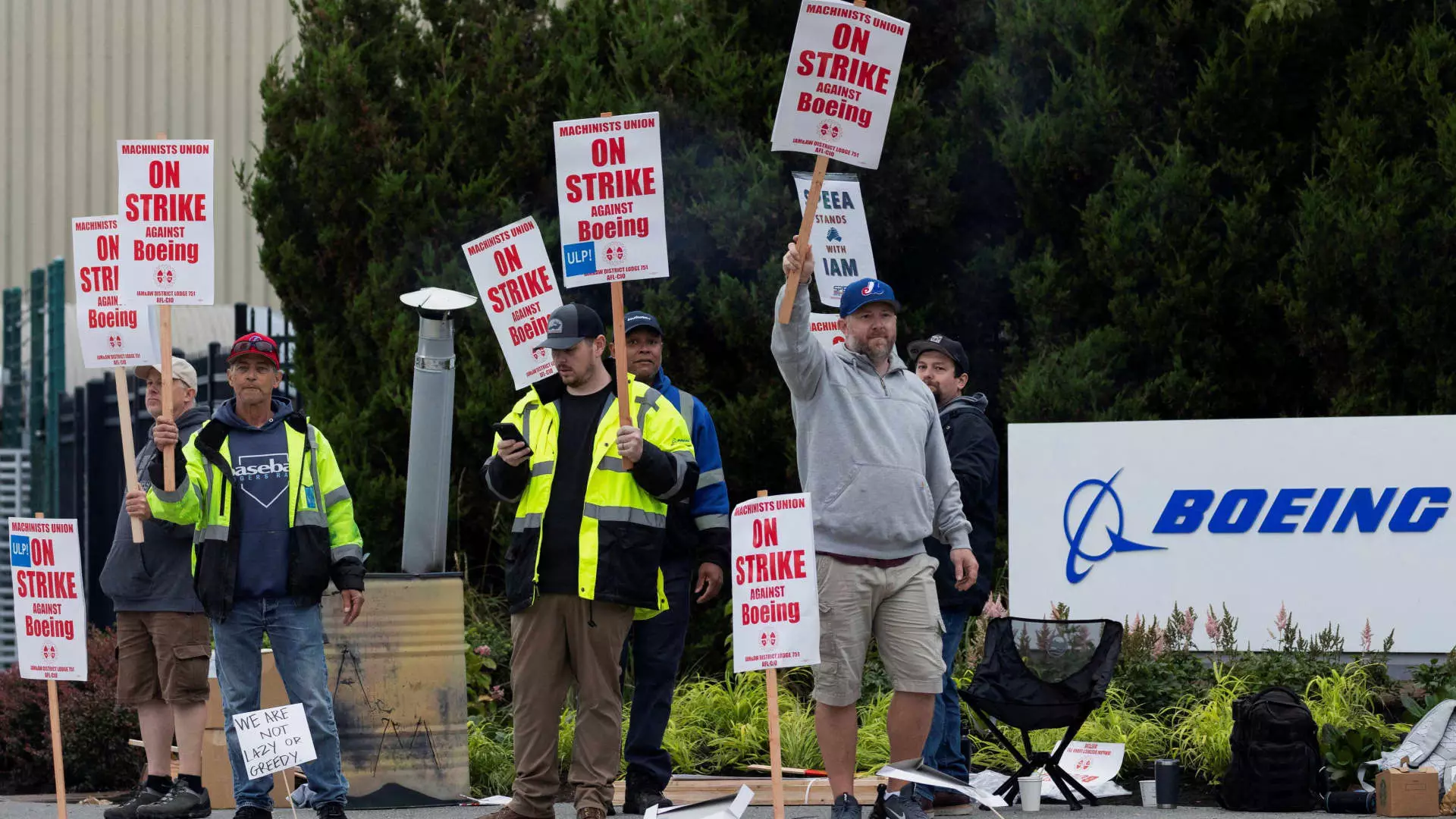Boeing, the aerospace giant nestled in Renton, Washington, is grappling with a significant financial strain as a machinist strike enters its second week. Workers at the company continue to advocate for substantial pay increases amid rising living costs, threatening to deepen the company’s already overwhelming financial woes. With approximately $60 billion in debt and struggles to turn a profit since 2018, the implications of this strike could potentially escalate costs for Boeing well beyond what it is currently experiencing. Analysts indicate that a prolonged work stoppage may lead not just to extensive operational disruptions but could also trigger a downgrade in the company’s credit rating, further complicating its fiscal landscape.
The stakes are high not only for the company but for its workforce, too. Stories from picketing machinists reveal a community that cherishes its work but is increasingly unable to afford the basic necessities in the Seattle area. Many of the striking workers have begun exploring secondary job opportunities in landscaping, deliveries, and moving services, highlighting the lengths to which they must go to maintain their livelihoods during this tumultuous time. The increasing cost of living—evident in skyrocketing housing prices—adds urgency to their demands for fair compensation.
The current strike stems from deep-seated frustrations regarding compensation. With a 95% rejection of a tentative labor agreement, the machinists have mobilized to push for wage increases that they feel accurately reflect their contributions to Boeing’s success. Despite Boeing’s offer of a 25% wage increase over four years, union representatives assert that workers seek closer to a 40% raise, alongside other benefits such as annual bonuses and reinstatement of pensions that were removed years prior. Indeed, the union’s demands reflect not just a quest for higher wages but a broader plea for job security and overall better working conditions.
While the union is working toward an agreement, both parties seem entrenched in their positions. Frustration is palpable as negotiations falter, with union negotiators emphasizing a lack of meaningful dialogue with Boeing’s executives. This stalled discussion raises questions about the company’s prioritization of its employees’ well-being amidst financial turbulence. New CEO Kelly Ortberg, despite just beginning his role, has signaled the need for cost-cutting measures, including temporary furloughs for tens of thousands of staff, which could further alienate the workforce.
The strike’s impact extends far beyond Boeing’s factory gates, affecting an extensive network of suppliers across the aerospace industry. With production grinding to a halt on most aircraft, the cascading effects on these suppliers could be severe. Analysts estimate the work stoppage costs Boeing approximately $50 million a day, a stark reminder of how quickly financial assessments can alter when labor disputes arise. Events within Boeing also underscore a broader trend across various industries, where labor disputes have taken center stage in recent years, resulting in increased compensation for workers in fields ranging from entertainment to transportation.
Government officials have also acknowledged the stakes at play, with Transportation Secretary Pete Buttigieg urging both parties to reach an agreement that benefits the workers while assisting Boeing in its recovery. The Biden administration’s interest mirrors a deep concern for fair labor practices in an era where skilled labor is increasingly hard to come by.
Reflecting on Boeing’s historical context, the last significant strike in 2008 lasted less than two months and occurred when the company was in far better financial standing. Today’s context presents a more challenging landscape—both economically and in terms of job competition. The labor market is tighter, making the retention of skilled workers vital to Boeing’s stability and growth moving forward. The company now faces the challenge of navigating these labor disputes while simultaneously grappling with a financial recovery that is more complex than in previous decades.
As the machinists continue to march in picket lines, striving for recognition and fair pay, the resolution of this strike remains uncertain. The intertwined futures of Boeing and its dedicated workforce hang in the balance; all eyes are on the negotiating tables as both sides prepare for the next moves in this critical labor struggle. The outcome could redefine not only job security for workers but also the company’s path toward regaining its stature within the aerospace industry.

